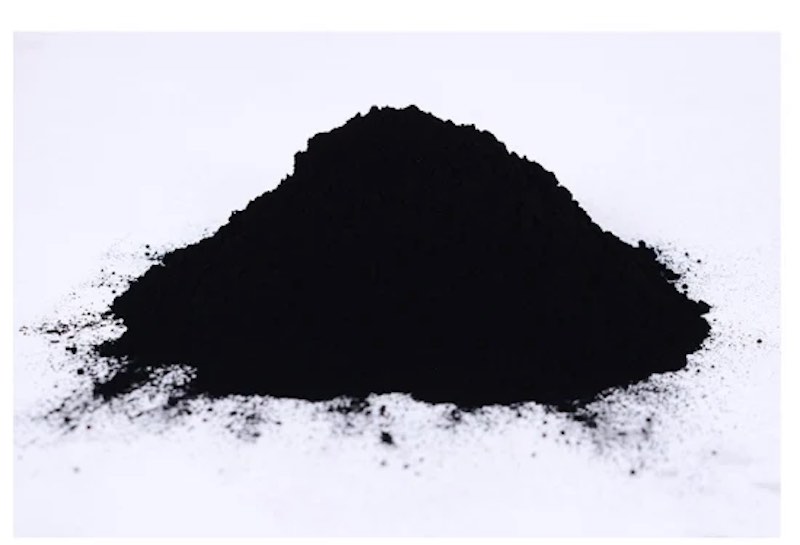
General description of Asphaltite powder in paint and drilling
Asphaltite is concrete floor paint is special a black lustrous asphalt to protect and decorate floors in homes and industry, both indoors and outdoors. Gilsonite concrete floor paint is a scientifically formulated treatment for masonry floors. It outperforms ordinary floor paint under traffic, washings, weather, acids and alkalis.
Paints with asphaltite base as below specification after mix with solvent:
- Concrete floor paint
- Formulated to protect and decorate masonry floors
- For interior or exterior use
- Low VOC
- Non slip
- Low sheen
- Fast drying
- No primer needed
- Cleans up with soap and water
- Latex base
The reaction of asphaltite powder in drilling fluid
Gilsonite, a native asphalt occurring in vein deposits below the surface of the ground, greatly reduces fluid loss and wall cake thickness when properly incorporate with any water based drilling fluid. Gilsonite is commonly found in Utah and Colorado. Gilsonite and other asphaltic type materials penetrate shale pore spaces as a drill bit penetrates a formation. It is assumed that a plastic-flow mechanism will allow the asphaltite to extend into the pores of the shale, thus, reducing fluid loss or mud invasion with a tendency to bond the shale and prevent sloughing. Asphaltite plates out on the bore hole to thereby reduce fluid loss.
However, asphaltite is by nature extremely hydrophobic and will not readily mix with water or water-based drilling fluids. Thus, it is difficult to use asphaltite as an effective drilling fluid additive.
Suitable Asphaltite powder in paint
When fluxed with raw tung or oiticica oil, gives an unstable liquid, that is, one which will take on excessive body when aging, and one which is not gas-proof.
The use of the present type of oils, however, results in a paint which does not take on excessive body upon aging and at the same time does not check and deteriorate rapidly upon exposure.
Driers, such as lead, cobalt, or manganese oxide, or the like, may be incorporated to control the drying time of the finished paint. Thinning oils such as mineral spirits, solvent naphtha, or any good solvent for the asphaltite and the oils, incorporated to bring the paint to the desired consistency. This normally requires about 50% to 65% by weight of thinning oils.
Use of Asphaltite use in paint
A paint consisting essentially of 20 gallons of petroleum solvent, 10 gallons of linseed oil, 10 gallons turpentine, pounds of Asphaltite pigment, 4 gallons varnish mixture consisting of 17.8% pentaerythritol rosin ester, 30.8% dehydrated castor oil, 1.4% of a mixture of lead, cobalt and manganese naphthenates, 1 gallon wetting agent consisting essentially of salts of petroleum sulfonic acids, 2 quarts of drier, and 1 pint of a hydrocarbon silicon penetrating oil, obtained by heating a mixture of finely ground silicon dioxide under pressure to a temperature of about 300 F. with a distillate product obtained by subjecting asphaltum to fractional distillation, said distillate product being that fraction which distillates at a temperature range of about 430 F. to 438 F
Color of asphaltite powder depend on temperature of melting also could be black, brown till red.
Advantage of asphaltite in paint industry
Environmental concerns have been raised and asphaltite is no longer an option.
Oil based sealers are bad for the environment, dont meet Federal specs and are outlawed in several states due to high VOCs. (pollutants)
Packing of asphaltite lump and powder form micronized
In lump form like rock packed in 500~1000kg jumbo bag
200 mesh packed in 500~1000kg jumbo bag
300 mesh packed in 500~1000kg jumbo bag
30-40 mesh packed in 500~1000kg jumbo bag
100 mesh packed in 500~1000kg jumbo bag
300 mesh packed in 25kg pp bag
mesh 200 packed 25kg multi paper bag
mesh 200 packed 50lbs multi paper bag
asphaltite 30-40 mesh packed pp bag on pallet
Bulk on vessel
Specification of asphaltite with drilling fluid application
TEST METHOD | RESULT | TEST | NO |
ASTM-D3174 | 1.5 | ASH CONTENT,WT% | 1 |
ASTM-D3173 | 1% | MOISTURE CONTENT,WT% | 2 |
ASTM-D3175 | 63 | VOLATILE MATTER,WT% | 3 |
ASTM-D4 | 81 | SOLUBILITY IS CS2,WT% | 5 |
ASTM-D3289 | 1.11 | SPECIFIC GRAVITY @25 C | 6 |
ASTM-D3279 | 90 | NORMAL HEPTHAN INSOLUBLES,WT% | 7 |
——————- | Black | COLOR IS MASS | 8 |
——————- | Black | COLOR IN STREAK OR POWDER | 9 |
ASTM-D36 | 145 | SOFTENING POINT,C | 10 |
ASTM-D5 | 0 | PENETRATION @25C | 11 |
ELEMENT ANALYSIS | |||
ASTM-D5291 | 84 | CARBON,WT% | 1 |
ASTM-D5291 | 7.1 | HYDROGEN,WT% | 2 |
ASTM-D5291 | 3.67 | NITROGEN,WT% | 3 |
ASTM-D5291 | 3.1 | OXYGEN,WT% | 4 |
LECO(S)ANALYZER | 4 | SULPHURE,WT% | 5 |

